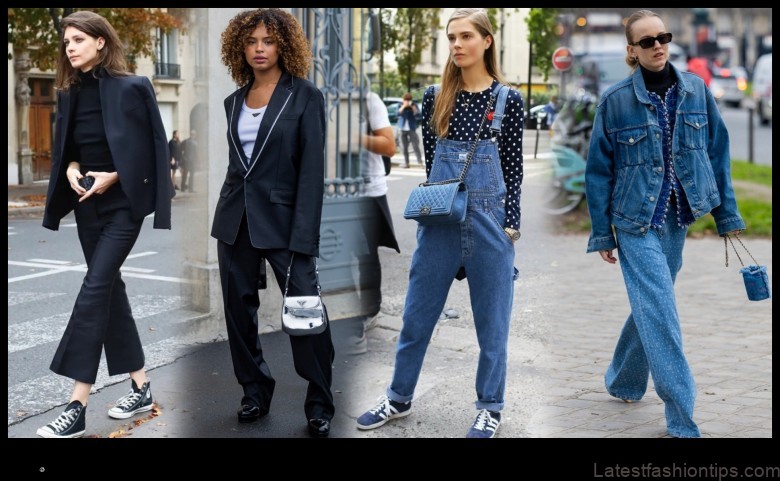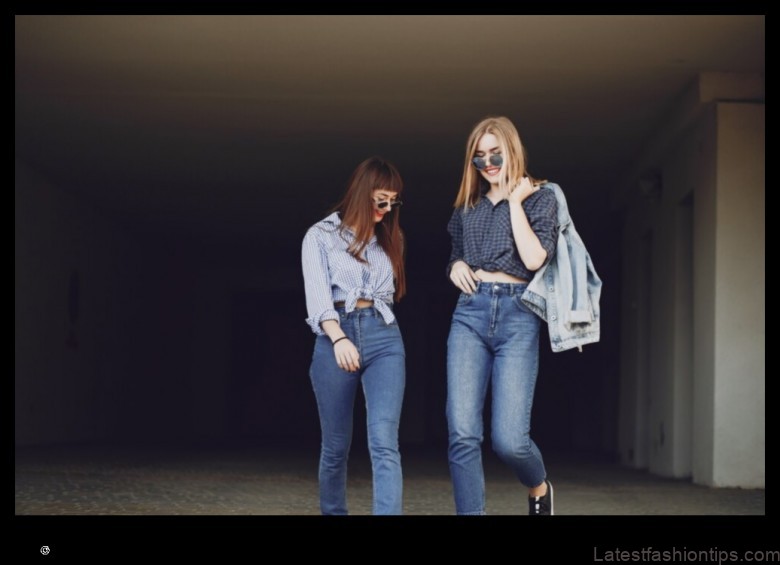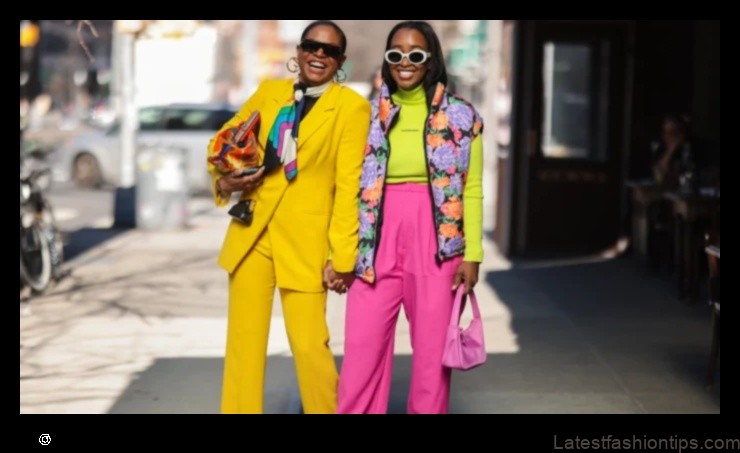
I. Introduction
Street style is a term used to describe the fashion trends that are popular among people who live in urban areas. It is often characterized by its eclectic mix of high-end designer pieces and more casual, everyday items.
Street style has its roots in the fashion runways of the 1960s and 1970s. During this time, designers began to create clothes that were inspired by the clothes that people were actually wearing on the streets. This led to a new kind of fashion, one that was more personal and expressive than the traditional, structured styles that had been popular in the past.
In the 1980s and 1990s, street style became even more popular as it was adopted by celebrities and other fashion influencers. This helped to bring street style to a wider audience and made it more accessible to people who were not living in major fashion cities.
Today, street style is a major part of the fashion industry. It is often used to predict upcoming trends and to inspire new designs. Street style is also a way for people to express their own personal style and to connect with others who share their interests.

II. History of Street Style
The history of street style can be traced back to the early days of the fashion industry. In the 19th century, haute couture designers began to create clothes that were inspired by the clothes that were worn by the wealthy and elite. These clothes were often very expensive and were only available to a small number of people.
In the early 20th century, the fashion industry began to change. Designers started to create clothes that were more affordable and accessible to the general public. This led to the rise of ready-to-wear fashion, which was sold in department stores and other retail outlets.
The ready-to-wear industry was a major factor in the development of street style. As more people had access to affordable fashion, they began to experiment with different styles and to create their own unique looks. This led to the emergence of a new kind of fashion, one that was more personal and expressive than the traditional, structured styles that had been popular in the past.
In the 1960s and 1970s, street style became even more popular as it was adopted by designers and fashion influencers. During this time, designers began to create clothes that were inspired by the clothes that people were actually wearing on the streets. This led to a new kind of fashion, one that was more personal and expressive than the traditional, structured styles that had been popular in the past.
In the 1980s and 1990s, street style became even more popular as it was adopted by celebrities and other fashion influencers. This helped to bring street style to a wider audience and made it more accessible to people who were not living in major fashion cities.
Today, street style is a major part of the fashion industry. It is often used to predict upcoming trends and to inspire new designs. Street style is also a way for people to express their own personal style and to connect with others who share their interests.
Key Elements of Street Style
There are a few key elements that are essential to street style. These elements include:
- Comfort
- Personal expression
- Eclecticism
- Trendsetting
Comfort is one of the most important elements of street style. Street style is all about wearing clothes that you feel good in and that make you look your best.
Personal expression is another key element of street style. Street style is a way for people to express their own personality and individuality.
Eclecticism is also an important element of street style. Street style is all about mixing and matching different styles and pieces to create a unique look.
Trendsetting is the final key element of street style. Street style is a way for people to set trends and to be ahead of the curve.
Different Types of Street Style
There are many different types of street style. Some of the most popular types include:
| Topic | Features |
|---|---|
| Street Style |
|
| Streetwear |
|
| Fashion |
|
| Style Evolution |
|
| Runway |
|
II. History of Street Style
Street style has a long and varied history, dating back to the early days of fashion. In the 19th century, working-class men and women in cities like London and Paris began to develop their own unique styles of dress, which were often influenced by the latest trends on the runway. These styles were often seen as rebellious and subversive, and they helped to challenge the traditional norms of fashion.
In the 20th century, street style continued to evolve, and it became increasingly popular with young people. In the 1960s, the hippie movement embraced street style, and in the 1970s, punk rock and disco gave rise to new and exciting styles of dress. By the 1980s, street style had become a major force in the fashion industry, and it was no longer seen as something that was only for the young and rebellious.
Today, street style is more popular than ever before. It is seen on the runways of major fashion houses, and it is also embraced by celebrities and everyday people alike. Street style is a reflection of the zeitgeist, and it is constantly evolving and changing.
III. Key Elements of Street Style
There are a number of key elements that define street style, including:
- Comfort
- Individuality
- Authenticity
- Repurposed or upcycled clothing
- A mix of high-end and high-street fashion
Street style is all about expressing yourself through your clothes, and it’s not about following the rules. If you’re looking to create your own street style, experiment with different combinations of clothing and accessories until you find a look that you feel comfortable and confident in.

IV. Different Types of Street Style
There are many different types of street style, each with its own unique set of characteristics. Some of the most common types of street style include:
- Casual street style: This type of street style is characterized by relaxed, comfortable clothing that can be worn for everyday activities. Casual street style often features jeans, T-shirts, sneakers, and other easy-to-wear pieces.
- Sophisticated street style: This type of street style is more polished and put-together than casual street style. Sophisticated street style often features tailored pieces, such as blazers, dresses, and skirts, paired with more casual pieces, such as jeans and sneakers.
- Ethnic street style: This type of street style draws inspiration from different cultures and ethnicities. Ethnic street style often features bright colors, bold prints, and traditional clothing from different cultures.
- Sporty street style: This type of street style is inspired by sportswear. Sporty street style often features athletic gear, such as tracksuits, sneakers, and athletic tops.
- High-fashion street style: This type of street style is inspired by the latest fashion trends. High-fashion street style often features statement pieces, such as designer clothes, jewelry, and accessories.
These are just a few of the many different types of street style that exist. Street style is constantly evolving, and new trends are emerging all the time. The best way to find out what’s trending in street style is to keep an eye on the latest fashion magazines, websites, and blogs.
V. How to Develop Your Own Street Style
Street style is all about expressing your own personal style, so there is no right or wrong way to do it. However, there are a few things you can keep in mind to help you develop your own unique street style.
First, start by looking at the different elements of street style and experimenting with different combinations. What kind of clothes do you feel most comfortable in? What kind of accessories do you like to wear? How do you want to present yourself to the world?
Once you have a better understanding of your personal style, you can start to put together your own outfits. When choosing clothes, think about the overall look you are trying to create and how the different pieces will work together. Don’t be afraid to mix and match different styles and trends.
Another important part of developing your own street style is to be confident in what you wear. Don’t be afraid to stand out from the crowd and wear something that makes you feel good. If you are confident in your outfit, others will be more likely to be confident in you.
Finally, remember that street style is always evolving. Keep an eye on the latest trends and experiment with new things. The more you experiment, the more you will learn about your own personal style and the more confident you will become in expressing it.
VI. Street Style and Fashion
Street style has become increasingly influential in the fashion industry in recent years. Designers are taking inspiration from street style trends, and street style stars are being featured in fashion magazines and on runways. This has led to a blurring of the lines between street style and high fashion.
Some people argue that street style is more authentic than high fashion. They believe that street style is a more accurate reflection of how people actually dress, while high fashion is often seen as being too impractical or unrealistic.
Others argue that street style is simply a watered-down version of high fashion. They believe that street style stars are simply copying the latest trends from the runway, and that they are not really creating anything new.
Ultimately, the debate over whether street style is more authentic or more derivative of high fashion is a matter of opinion. There is no right or wrong answer. However, it is clear that street style has had a significant impact on the fashion industry, and it is likely to continue to do so in the years to come.
VII. Street Style and Culture
Street style is a reflection of the culture and values of the people who wear it. It is a way for individuals to express their personality and individuality, and to connect with others who share their interests.
The different types of street style that exist are a reflection of the different cultures and subcultures that exist within a society. For example, in the United States, there are many different types of street style that reflect the diversity of the country’s population. There is urban street style, which is influenced by hip-hop and rap culture; suburban street style, which is more preppy and conservative; and rural street style, which is more rugged and outdoorsy.
Street style is also influenced by the fashion trends that are popular at any given time. However, street style is not simply a reflection of what is currently fashionable. It is also a way for people to express their own personal style, and to create their own unique look.
Street style is a constantly evolving phenomenon. As new trends emerge, and as different cultures and subcultures interact with each other, street style continues to change and develop. It is a vibrant and dynamic part of fashion, and it is a fascinating way to learn about the different cultures and values of the world.
Street Style and the Media
The media has played a significant role in the evolution of street style. In the early days, street style photography was used to document the latest trends and to showcase the work of emerging designers. Today, street style photography is a major part of the fashion industry, and it is used to promote brands, products, and designers.
The media has also helped to popularize street style by featuring it in magazines, newspapers, and online publications. Street style has become a global phenomenon, and it is now seen as a legitimate fashion trend.
The media has also had a positive impact on street style by providing a platform for self-expression. Street style allows people to express their individuality and creativity, and it can be a way to connect with others who share similar interests.
However, the media can also have a negative impact on street style. For example, some media outlets may focus on negative aspects of street style, such as the cost of clothing or the environmental impact of fast fashion. This can lead to people feeling discouraged from expressing themselves through their clothing.
Overall, the media has played a significant role in the evolution of street style. It has helped to popularize street style, to promote brands and designers, and to provide a platform for self-expression. However, the media can also have a negative impact on street style, and it is important to be aware of this when consuming media content.
IX. Street Style and the Economy
Street style has become a major economic force in recent years, with brands and retailers increasingly looking to street style influencers to promote their products. In 2018, the global street style market was estimated to be worth \$2.4 billion, and it is expected to grow to \$3.3 billion by 2023.
There are a number of factors driving the growth of the street style economy. One factor is the increasing popularity of social media, which has made it easier for street style influencers to share their photos and videos with a global audience. Another factor is the growing demand for affordable fashion, which has led brands to look for new ways to reach consumers.
Street style has also become a major source of inspiration for designers, who are increasingly looking to street style influencers for new ideas. This has led to a blurring of the lines between fashion and street style, with many designers now incorporating elements of street style into their collections.
The growth of the street style economy has had a number of positive effects. It has helped to create new opportunities for fashion designers and retailers, and it has also helped to make fashion more accessible to consumers. However, the growth of the street style economy has also raised some concerns about the commodification of street style and the impact of street style on traditional fashion brands.
Despite these concerns, the street style economy is still growing rapidly, and it is likely to continue to be a major force in the fashion industry for years to come.
X. FAQ
Q: What is street style?
A: Street style is a fashion trend that originated in the 1990s and is characterized by its eclectic mix of high-end and high-street fashion, as well as its emphasis on individuality and self-expression.
Q: How did street style evolve from the runway to everyday fashion?
A: Street style began as a way for fashion designers to showcase their latest collections on real people, rather than on models. In the early 2000s, street style photographers began to document the unique fashion sense of everyday people, and this helped to bring street style to a wider audience. Today, street style is a major part of the fashion industry, and it is often seen as an indicator of upcoming trends.
Q: What are the key elements of street style?
A: The key elements of street style include:
* A mix of high-end and high-street fashion
* An emphasis on individuality and self-expression
* A willingness to experiment with different styles
* A focus on comfort and practicality
Street style is all about expressing your personal style, so there are no hard and fast rules. However, these are some of the key elements that you can look for when creating your own street style look.
Table of Contents
Maybe You Like Them Too
- Fashion Fusion When Makeup Meets Style to Create a Whole New Look
- A Colorful Journey A Look at the History and Trends of Hair Color
- Hair Care Rituals from Around the World A Cultural Journey
- Cutting-Edge Fashion Unveiling the Latest Hair Cuts That Will Make You Stand Out
- Hair Harmony Finding the Perfect Cut and Color for Your Face Shape



